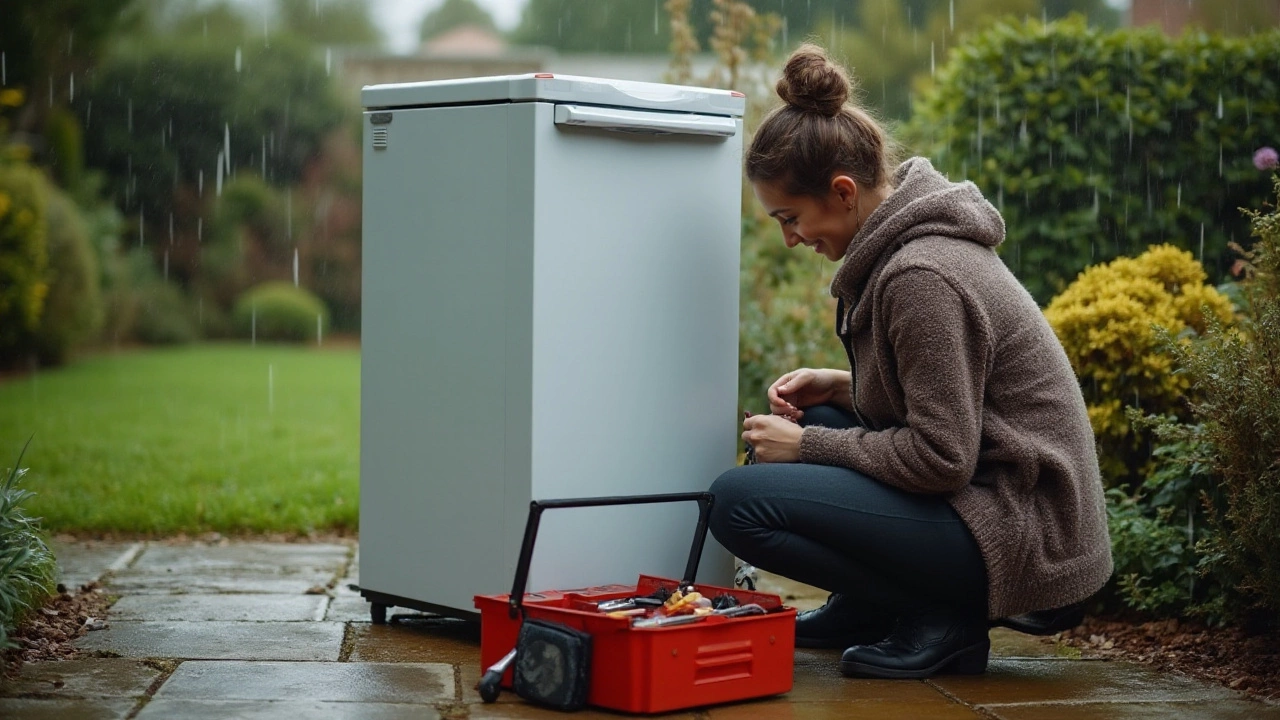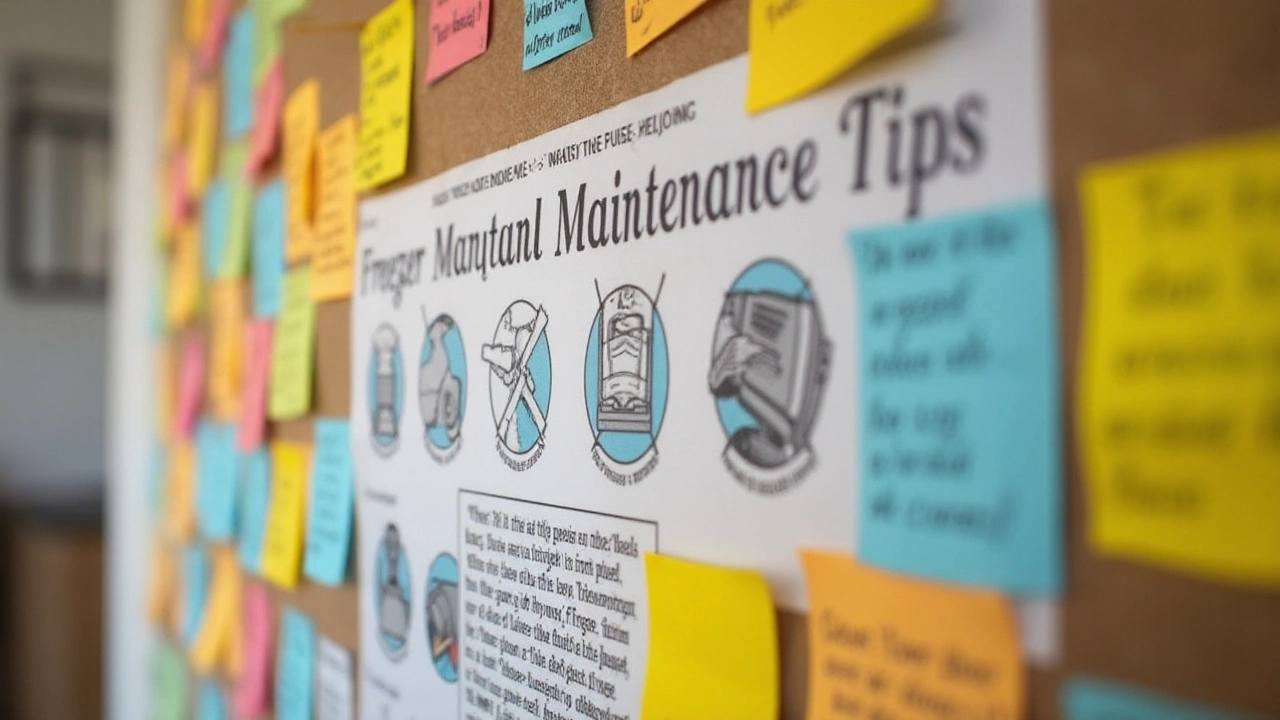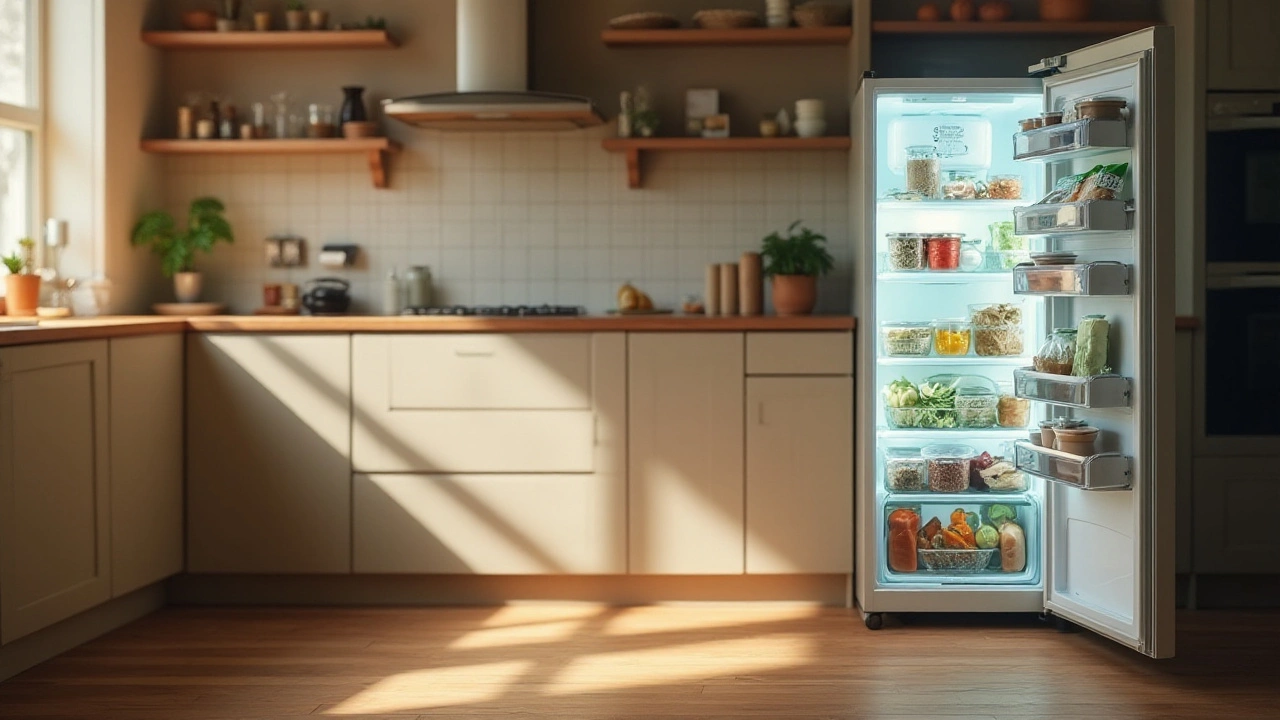Nothing is quite as annoying as discovering your freezer isn't freezing properly. Whether you're dealing with melting popsicles or soft ice cream, a malfunctioning freezer can disrupt your daily life. If you've opened that frosty door only to find your food slowly thawing, you're probably wondering what's going wrong.
Thankfully, figuring out what's causing the problem doesn't have to be a mystery. By understanding how your freezer works and recognizing common issues, you can often prevent minor inconveniences from turning into full-blown headaches. Let's delve into the mechanics of keeping your freezer at optimal chill.
- Understanding Freezer Mechanics
- Common Causes of Freezer Malfunctions
- DIY Fixes and Maintenance Tips
- When to Call a Professional
Understanding Freezer Mechanics
Freezers are fascinating appliances that rely on a complex interplay of mechanical and thermodynamic principles to keep your eatables cold. At its core, a freezer functions using a vapor compression cycle. You may not realize it, but this incredible cycle operates behind the scenes, allowing it to sustain such low temperatures that keep your frozen goods intact. This cycle involves a refrigerant, a substance circulating through a set of coils, changing from liquid to gas and back again, absorbing and expelling heat in the process. Known as the heart of the freezer, the compressor compresses the refrigerant gas, leading to an increase in temperature. As the gas flows through the coils outside the appliance, it cools and transforms back into a liquid. Then, this liquid travels into the interior coils where it evaporates into a gas, drawing heat from inside and cooling the freezer compartment.
Modern freezers also incorporate advanced thermostats to precisely monitor and control the interior temperature. These thermostats detect whether the inside is becoming too warm or cold and adjust the compressor's cycle accordingly to maintain that chilly environment. It's intriguing to note how this translates into the practical world where you store different goods at different levels within the freezer to maximize efficiency. For instance, frequently accessed items are best kept at the top for easy reach, while those demanding stable freezing stay colder at the bottom. You might not realize that proper storage is a part of freezer mechanics, impacting efficiency and cooling prowess directly.
In many freezers, defrost mechanisms also play a vital role in maintaining optimal performance. This process prevents excessive ice buildup, which can otherwise compromise insulation and airflow. Auto-defrost systems, particularly, ensure that ice doesn't turn your storage space into a winter wonderland, thereby diminishing the overall cooling capacity. This is crucial because an inefficient airflow distribution can inadvertently cause cooling inconsistencies, making some zones warmer than others. Ensuring an even temperature distribution is key, and understanding how these components work together can illuminate why your freezer repair might be needed when things go awry.
Every brand and model varies, incorporating unique components or technologies that set them apart. Take, for example, inverter technology seen in some newer models, which optimizes speed and efficiency. This technology adjusts the compressor's speed according to the freezer's requirements, promising energy savings and a quieter operation. While the fundamentals remain constant, freezers continue to evolve with innovative engineering solutions, making them more efficient and sustainable. As an insightful article from Consumer Reports once highlighted, "Understanding how your appliance works not only enhances its performance but extends its lifespan."
— Consumer Reports

Common Causes of Freezer Malfunctions
Your freezer not freezing might be due to a complexity of issues that are sometimes intertwined. One of the most prevalent reasons is a faulty thermostat. This tiny but crucial component regulates the temperature in your freezer, ensuring everything stays comfortably frozen. If your thermostat malfunctions, your freezer won't receive the right signals to cool down, leading to a warmer than desired environment.
Obstructed vents can also lead to an imbalance in airflow, crucial for maintaining a cool environment within the freezer. Proper airflow ensures that cold air circulates evenly. If vents are blocked by stored items, the cool distribution of air can be stifled, leading to pockets of warmth inside. It’s like having a breeze interrupted by a wall; the chill doesn't reach where it needs to go. So, make sure air pathways remain clear for optimal performance.
Do not underestimate the impact of the door gasket – the rubber seal around the freezer door. If this seal is worn or damaged, warmth is allowed in, as if you left your window open during a winter storm. Regularly inspect this seal to ensure it is intact and forming a seal with the freezer’s opening. Even the slightest gap can let in external temperatures that might diminish your freezer’s coolness. Keep a dollar bill partially inside the gasket as you close the door; if it slips out easily, replace the seal.
Freezer not freezing properly can sometimes be attributed to external factors such as room temperature. Placing a freezer in a location that experiences frequent temperature fluctuations, like a garage, can overwhelm the appliance. The more a freezer has to work against the surrounding temperature, the harder it must strain to maintain its internal chill, which poses a problem, especially in uninsulated areas. Consider relocating your freezer to a location with a stable climate for optimal performance.
Occasionally, the issue may stem from our habits. Opening the freezer door repeatedly causes a rush of warm air into the unit. This brief warmth can make your freezer work doubly hard to catch up, inevitably leading to wear and tear over time. Also, overfilling your freezer can impede airflow, similar to blocking vents, leaving certain areas warmer than needed.
An expert from the University of Minnesota mentions, "Energy consumption rises by 15% with every degree the environment surrounding the freezer exceeds recommended conditions."
Acknowledging these causes and addressing them proactively can prevent significant disruptions in your cold storage experience. The first rule of thumb? Always give your freezer some breathing room, both externally and internally, and you'll keep your frozen goods safely chilled.

DIY Fixes and Maintenance Tips
When your freezer decides to take a little nap from its chilling duties, don't rush off to the service center just yet. Sometimes, the solutions lie within your hands, demanding just a bit of elbow grease and patience. It’s crucial to first identify the potential culprits that may disrupt the icy harmony in your appliance. Start with inspecting the freezer's door seals. Over time, these seals can crack or warp, letting warm air sneak in and sabotage your frozen goods. To check, close the door on a piece of paper or dollar bill - if it slides out easily, you might have a seal problem. Replacing a door seal is often straightforward, but it requires you to order the exact size and model which fits your unit.
Your freezer's condenser coils also play a pivotal role in maintaining the cold, but they can become dusty or iced over, leading to reduced efficiency. You’ll find these coils at the back or base of most freezers. Turn off the unit and use a vacuum cleaner or a coil brush to gently remove dust and dirt. For frozen coils, allow them to thaw naturally with the appliance turned off. And while you’re back there, don’t overlook the fan! It’s vital for propelling cold air throughout the freezer, so ensure it spins freely without obstruction.
A cluttered freezer may also hinder proper air circulation. It's a common oversight, especially when stockpiling food. Keep items organized and avoid stacking them too close to the vents. This not only optimizes the cooling but can extend the lifespan of your unit. Interestingly, according to an Energy Star report, a well-packed freezer retains cold better during power outages compared to an empty one. So, balance is key - neither too packed, nor too bare.
For more technical fixes, consider recalibrating the thermostat. A simple turn of the dial might be all that’s needed if the internal temperature doesn't feel quite up to par. However, if you're continuously having to adjust the freezer temperature, it might indicate a faulty thermostat that requires replacing. Before making any replacements, always refer to the unit's manual. And remember, safety first: always unplug your appliance when performing deeper maintenance.
For those who need a bit more guidance, here's a straightforward list of steps to improve your freezer's efficiency:
- Inspect and clean the door seals.
- Vacuum or brush off the condenser coils and ensure the fan is operational.
- Organize the contents to promote good airflow.
- Recalibrate the thermostat, and consider replacing it if issues persist.

When to Call a Professional
At times, the secret to resolving your freezer repair problems doesn't lie in DIY fixes, but in bringing in an expert hand. So, how do you know when it's time to take that step? First and foremost, any electrical malfunction should raise red flags. Attempting to tinker with electrical components without proper knowledge can not only damage the appliance further but also pose significant safety risks. If you've noticed your freezer periodically shutting down or the digital display flickering on and off, that's a clear indicator to contact a professional. They possess the tools and know-how to deal with complex electrical systems safely and efficiently, saving you from potential hazards.
Complex mechanical failures also necessitate expert intervention. Suppose the compressor—the heart of your freezer's cooling system—is faulty or emitting unusual sounds. In this instance, calling in a professional can prevent a minor issue from snowballing into a major replacement cost. The compressor is integral in circulating refrigerant throughout the system, and its failure often leads to poor cooling, risking the safety of your stored goods. With their specialized training and equipment, technicians can diagnose and rectify such issues much more effectively than any amateur attempt would.
It's also worth considering a professional opinion when you run into persistent problems that defy standard troubleshooting. A freezer not freezing consistently despite cleaning the coils, adjusting the thermostat, or ensuring door seals are intact points toward more obscure issues like a hidden refrigerant leak or a failing defrost system.
"Having regular maintenance and an expert's analysis not only prolongs the life of your appliances," says an article from a leading appliance magazine, "but it keeps them running efficiently, saving you money in the long run."They can delve deeper into the appliance's mechanics to pinpoint hidden defects or errors that might go unnoticed without a skilled eye.
Occasionally, the issue could be with the modern tech components integrated within newer freezer models. These have advanced sensors and digital controls that a typical DIYer might not fully understand. If encountering error codes or if your cold storage problems are accompanied by strange digital readouts, it might be beyond a typical homeowner's scope to resolve. A professional equipped with updated software tools can interpret and address these digital issues effectively.
Lastly, consider the economic and practical aspects. In instances where the cost of DIY repairs begins to mount—either due to repeated, ineffective fixes or the necessity for specialized tools—it's more pragmatic to consult a professional technician. Their depth of experience not only ensures a fix but often wards off future issues, contributing to cost efficiency in the long run.
Ultimately, knowing when to step back and call a professional is about recognizing the limits of your expertise, prioritizing safety, and honoring the intricate engineering of your freezer. Embrace this step when needed, and you may just find it to be a wiser, perhaps even more economical, route to a perfectly functioning appliance.
